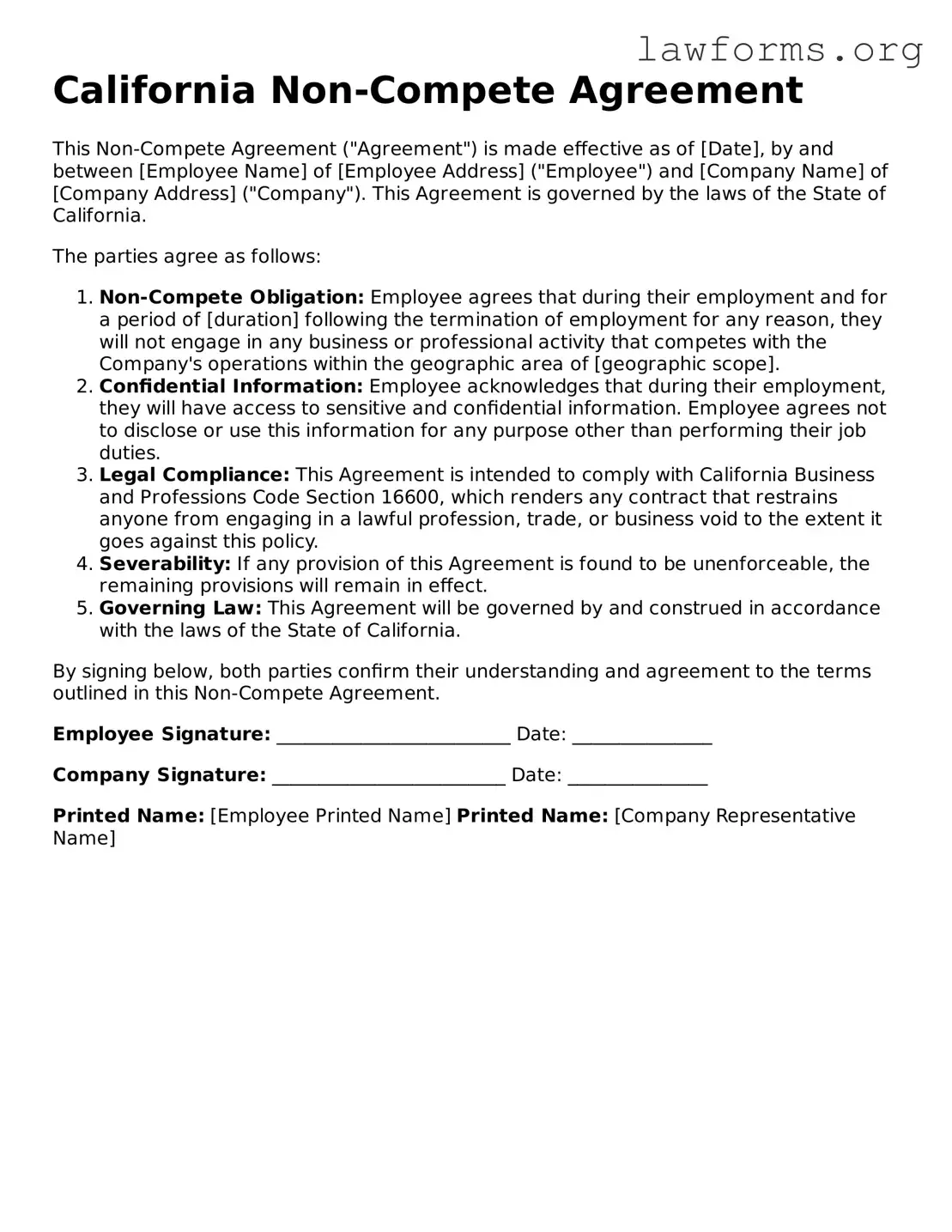California Non-Compete Agreement
This Non-Compete Agreement ("Agreement") is made effective as of [Date], by and between [Employee Name] of [Employee Address] ("Employee") and [Company Name] of [Company Address] ("Company"). This Agreement is governed by the laws of the State of California.
The parties agree as follows:
- Non-Compete Obligation: Employee agrees that during their employment and for a period of [duration] following the termination of employment for any reason, they will not engage in any business or professional activity that competes with the Company's operations within the geographic area of [geographic scope].
- Confidential Information: Employee acknowledges that during their employment, they will have access to sensitive and confidential information. Employee agrees not to disclose or use this information for any purpose other than performing their job duties.
- Legal Compliance: This Agreement is intended to comply with California Business and Professions Code Section 16600, which renders any contract that restrains anyone from engaging in a lawful profession, trade, or business void to the extent it goes against this policy.
- Severability: If any provision of this Agreement is found to be unenforceable, the remaining provisions will remain in effect.
- Governing Law: This Agreement will be governed by and construed in accordance with the laws of the State of California.
By signing below, both parties confirm their understanding and agreement to the terms outlined in this Non-Compete Agreement.
Employee Signature: _________________________ Date: _______________
Company Signature: _________________________ Date: _______________
Printed Name: [Employee Printed Name] Printed Name: [Company Representative Name]
